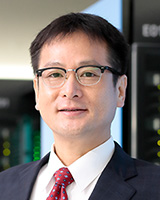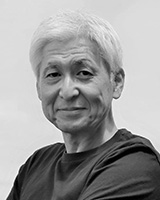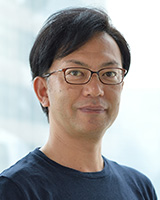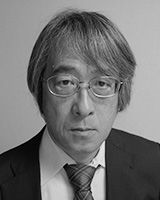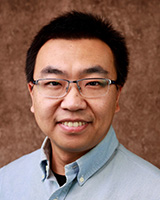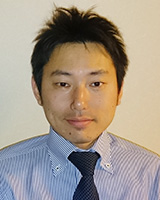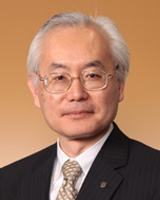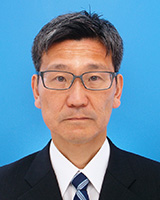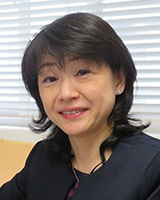12:40
|
12:45 |
開会挨拶 |
12:45
|
13:40 |
-
- 「Ansys LS-DYNA Roadmap」
-
Mr. Madhu Keshavamurthy
Director R&D, R&D, ANSYS, Inc.
-
In this presentation, I will cover the LS-DYNA roadmap and the exciting new features in R14 (2023R1) release of LS-DYNA.
|
13:40
|
13:55 |
休憩 |
13:55
|
14:50 |
-
- 「「富岳」が拓くSociety 5.0時代のスマートデザイン」
Smart Design Realized on Supercomputer “Fugaku” in the Society 5.0 Era
-
神戸大学 システム情報学研究科 教授
坪倉 誠 様
Prof. Makoto Tsubokura
Graduate School of System Informatics, Kobe University
-
少子高齢化に伴う労働生産性の低下,確実に来襲する新興ウイルスによるパンデミックや予期せぬ自然災害への対応,さらにはカーボンニュートラル社会の実現等,激変する社会に対応して今後も我が国がものづくり大国としてその国際競争力を維持していくためには,単なる性能試験の代替としてのシミュレーションを脱却し,新たなデジタルエンジニアリング技術を創生することが急務である.我々のグループは,「富岳」の性能を十二分に活用できるアプリケーションソフトウェアによる高性能シミュレーションと,多目的最適化,トポロジー最適化、機械学習等のデータ科学を融合させることで,サイバー空間とフィジカル空間を高度に結合させた次世代型設計システムの開発を進めている.本講演では自動車を対象としたCAEへの適用例を中心として、機械学習によるサロゲートモデルやリダクションモデルの構築、サロゲートモデルを併用した多目的最適化フレームワークの開発、構造解析を対象としたトポロジー最適化、意匠空間を考慮したAI支援多目的最適化等について紹介する。
Our society is undergoing drastic changes, such as the decline in labor productivity due to the declining birthrate and aging population, the response to pandemics caused by emerging viruses, and unforeseen natural disasters and the realization of a carbon-neutral society.
Under such circumstances, in order for Japan to maintain its international competitiveness as a manufacturing superpower, it is necessary to break away from simulation as a mere substitute for experimental testing and create new digital engineering technology.
By coupling the high-performance simulation tuned on the supercomputer “Fugaku” and data science such as multi-objective optimization, topology optimization, and machine learning, we are developing an innovative design system highly integrating the cyber and physical spaces.
In this talk, we will introduce some of the applications on automotive CAE.
|
14:50
|
15:45 |
-
- 「人×AI×シミュレーションによる「深化」と「探索」への挑戦」
Challenge to “exploitation” and “exploration” by human × AI × simulation
-
横浜ゴム株式会社 AI研究室 エグゼクティブフェロー・研究室長
小石 正隆 様
Dr. Masataka Koishi
Executive Fellow, AI Laboratory, The Yokohama Rubber Co., Ltd.
-
弊社では人とAIとの協奏による独自のAI活用フレームワーク “HAICoLab” に従って「深化」と「探索」、すなわち、漸進的イノベーションと急進的イノベーションに挑戦しています。特に未踏領域での発見を目指す急進的イノベーションへの挑戦では、AIだけではなく、CAEの分野ではおなじみの数値シミュレーションや最適化手法、さらに人のひらめきや発想が重要であると考えています。本講演では、HAICoLabの理念や実践時の工夫と共に、弊社で取り組んできた事例を紹介します。さらに、我々が苦心している認知バイアスの影響についても言及します。
At our company, we are challenging “exploitation” and “exploration”, that is, gradual innovation and radical innovation, according to our unique AI utilization framework “HAICoLab” in collaboration with humans and AI. Especially in the challenge of radical innovation aimed at discoveries in unexplored areas, we believe that not only AI but also numerical simulations and optimization methods that are familiar in the field of CAE, as well as human inspiration and ideas, are important. In this presentation, I will introduce the philosophy of HAICoLab, the ingenuity in practice, and the case studies that our company has been working on. In addition, I would like to mention the effects of cognitive biases that we are struggling with.
|
15:45
|
16:00 |
休憩 |
16:00
|
16:55 |
-
- 「モノづくり基盤力を強化した製造DXの進化」
The evolution of manufacturing DX that strengthens the foundational core manufacturing technology
-
パナソニック コネクト株式会社 プロセスオートメーション事業部 部長
深澤 克介 様
Mr. Katsusuke Fukasawa
General Manager, Process Automation Business Division,
Panasonic Connect Co., Ltd.
-
企業を取り巻く外的環境の変化が激しさを増す中、多くのグローバル製造業の皆様が競争力強化のためにDXを加速し、データ収集・分析によるタイムリーな経営判断につなげる挑戦を続けています。複数の弊社導入事例を通じ学んだ事は、モノづくり基盤をしっかりと構築している製造業では、DXの継続的進化が可能と言う事。モノづくり現場がどのように課題を克服し、DXを実現・継続進化させているのか、自社を含めた複数事例を現場起点で紐解きます。
In today's manufacturing industry which are affected by external circumstances, they are required to take actions to adopt to the DX business environment that collecting, keeping, and using data securely, efficiently to make judgement and take actions for maximizing the benefit to the organization. Through our experiences, the global manufacture who has the basic act of core manufacturing technology can keep up with evolving DX . How do they overcome their problem and challenge DX. We will show DX use case and our future solutions.
|
16:55
|
17:50 |
-
- 「BEXTソリッド要素を用いた高強度鋼板のき裂進展に関する研究」
Study on Crack Propagation in High-Strength Steel Plates Using BEXT Solid Elements
-
本田技研工業株式会社 四輪事業本部ものづくりセンター
開発戦略統括部 開発プロセス改革部 開発DX推進課 エキスパートエンジニア
高田 賢治 様
Mr. Kenji Takada
Expert Engineer, Automobile Development Supervisory Unit, Vehicle Planning & Management Division, Development Quality Department, Monozukuri Center, Automobile Operations, Honda Motor Co., Ltd.
-
本研究では,アイソジオメトリック解析のベジェ関数で記述された3次基底関数を持つBEXTソリッド要素について検討した.BEXTソリッド計算により,亀裂先端の応力三軸性は三軸引張状態(η>0.66)であることが確認されため,小丸棒引張実験により三軸引張状態での破壊ひずみを測定した.次に,圧縮状態(η=-∞)から三軸引張状態(η=1.0)までの応力三軸性に対応する破壊ひずみを定義した破壊モデルを構築し,拡張延性破壊モデルと名づけた.このモデルとBEXTソリッド要素を用いて,Vノッチを有する試験片の亀裂進展方向について検討した.更に,片側にのみノッチを設けた試験片を用いて,破壊発生後のき裂進展挙動を検討した.
In this study, BEXT solid element composed of third-order basis function described by the Bezier function employed in Isogeometric analysis was investigated. The stress triaxiality at the crack tip was confirmed by BEXT solid calculations to be in triaxial tensile state(η>0.66), so the fracture strain in the triaxial tensile state was measured using small round bar tensile experiment. Finally, fracture model was constructed that defined the fracture strain corresponding to the stress triaxiality from the compression state(η=-∞) to the triaxial tensile state(η=1.0), which was named as extended ductile fracture model. Using this model and BEXT solid elements, the direction of crack propagation in specimen with V-notches was investigated. Next, the crack growth behavior after fracture initiation was examined using specimen with a notch on only one side. It was found that the stress triaxiality at the crack tip changed during deformation of the specimen, After the fracture initiation, the crack growth was unstable, then in the next state it became stable, and finally it was unstable again.
|
17:50
|
17:55 |
閉会挨拶 |
18:00
|
19:30 |
懇親会 |



